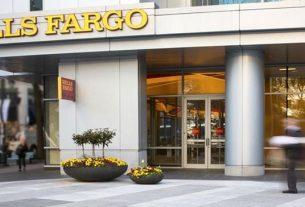|
Getting your Trinity Audio player ready...
|
Below are the newest 2023 Wall Street S&P 500 forecasts. The S&P 500 price targets range from 3,675 to 4,500. This implies returns of between -7.5% and +13% from the Dec 8, 2022 close of 3,963.
The key risks to the S&P 500’s performance include earnings cuts and valuation compression. If these two things were to happen, the S&P 500 could easily decline by 10% or more from current levels.
The S&P 500 could also see greater-than-expected earnings cuts and a valuation increase. This would occur if the market looks beyond the earnings cuts and expects better times ahead. The Fed could also pivot sooner-than-expected, thereby reigniting the bull market.
Personally, I believe the worst of the bear market was over when the S&P 500 hit 3,577 in October 2022. What matters most is what the Fed plans to do with interest rates. Come 1Q 2023, I think the Fed will have to pause its hikes and start cutting by the end of 2023.
As Asana billionaire CEO Dustin Moskowitz wisely quipped, “I’m CEO of the Asana company, but lately, Jay Powell has been CEO of the stock price.” Sadly, this scenario will likely continue to be true for the next 12 months.
A Recession In 2023 Is Almost A Certainty
With the yield curve the most inverted since 1981, the U.S. economy will most likely go back into a recession in 2023 (90% chance IMO). Take a look at the chart below. It shows how a recession has always followed an inverted yield curve since 1970.
The inversion is causing me to invest 60%+ of my cash and cash flow into one-year Treasuries yielding 4.7%+. A 4.7% guaranteed return on the S&P 500 would bring the index to 4,150, excluding dividends.
4,150 is on the upper third of the various 2023 Wall Street S&P 500 price targets (3,675 – 4,500). Therefore, it makes sense for me to invest the majority of my funds earmarked toward stocks and bonds into one-year Treasury bonds. When investing, please learn to think in percentages.
Again, I’m a middle-aged man with two kids, a mortgage, a stay-at-home spouse, and no job. I can’t afford to take too much risk. Otherwise, I’d end up employed!
2023 Wall Street Forecasts Of The S&P 500
Shoutout to Sam Ro from Tker.co for putting these estimates and summaries together in his newsletter. Here are 16 Wall Street S&P 500 forecasts for 2023 segmented by Bearish, Neutral, Positive, and Bullish.
Don’t forget to participate in the one-question survey below on where you think the S&P 500 will go in 2023. Let’s see if you got what it takes to be a good Wall Street strategist!
Bearish 2023 S&P 500 Forecasts
- Barclays: 3,675, $210 EPS (as of Nov. 21, 2022) “We acknowledge some upside risks to our scenario analysis given post-peak inflation, strong consumer balance sheets and a resilient labor market. However, current multiples are baking in a sharp moderation in inflation and ultimately a soft landing, which we continue to believe is a low probability event.“
- Societe Generale: 3,800 (as of Nov. 30) “Bearish but not as bearish as 2022 as the returns profile should be much better in 2023 as Fed hiking nears an end for this cycle. Our ‘hard soft-landing’ scenario sees EPS growth rebounding to 0% in 2023. We expect the index to trade in a wide range as we see negative profit growth in 1H23, a Fed pivot in June 2023, China re-opening in 3Q23 and a US recession in 1Q24.”
- Capital Economics: 3,800 (as of Oct. 28) “We expect global economic growth to disappoint and the world to slip into a recession, resulting in more pain for global equities and corporate bonds. But we don’t anticipate a particularly prolonged downturn from here: by mid-2023 or so the worst may be behind us and risky assets could, in our view, start to rally again on a more sustained basis.“ I’ve personally never heard of these guys before.
- Morgan Stanley: 3,900, $195 EPS (as of Nov. 14) “This leaves us 16% below consensus on ’23 EPS in our base case and down 11% from a year-over-year growth standpoint. After what’s left of this current tactical rally, we see the S&P 500 discounting the ’23 earnings risk sometime in Q123 via a ~3,000-3,300 price trough. We think this occurs in advance of the eventual trough in EPS, which is typical for earnings recessions.“
- UBS: 3,900, $198 EPS (as of Nov. 8) “With UBS economists forecasting a US recession for Q2-Q4 2023, the setup for 2023 is essentially a race between easing inflation and financial conditions versus the coming hit to growth+earnings. History shows that growth and earnings continue to deteriorate into market troughs before financial conditions ease materially.“
- Citi: 3,900, $215 EPS (as of Nov. 18) “ Implicit in our view is that multiples tend to expand coming out of recessions as EPS in the denominator continues to fall while the market begins pricing in recovery on the other side. Part of this multiple expansion, however, has a rates connection. The monetary policy impulse to lower rates lifts multiples as the economy works its way out of the depths of recession.“
Neutral 2023 S&P 500 Forecasts
- BofA: 4,000, $200 EPS (as of Nov. 28) “But there is a lot of variability here. Our bull case, 4600, is based on our Sell Side Indicator being as close to a ‘Buy’ signal as it was in prior market bottoms – Wall Street is bearish, which is bullish. Our bear case from stressing our signals yields 3000.“
- Goldman Sachs: 4,000, $224 EPS (as of Nov. 21) “The performance of US stocks in 2022 was all about a painful valuation de-rating but the equity story for 2023 will be about the lack of EPS growth. Zero earnings growth will match zero appreciation in the S&P 500.“ My old shop where I used to work in NYC. I’ve never seen the S&P 500 change exactly based on earnings changes.
- HSBC: 4,000, $225 EPS (as of Oct. 4) “…we think valuation headwinds will persist well into 2023, and most downside in the coming months will come from slowing profitability.“
- Credit Suisse: 4,050, $230 EPS (as of Oct. 3) “2023: A Year of Weak, Non-Recessionary Growth and Falling Inflation.” My other old shop that has been going through some terrible times lately due to massive risk management mistakes. People have fled CS as management tries to retain talent but also sell off its investment bank. It looks like a Saudi royal prince is interested in investing in CS.
- RBC: 4,100, $199 EPS (as of Nov. 30) “We think the path to 4,100 is likely to be a choppy one in 2023, with a potential retest of the October lows early in the year as earnings forecasts are cut, Fed policy gets closer to a transition (stocks tend to fall ahead of final cuts), and investors digest the onset of a challenging economy.“
Positive 2023 S&P 500 Forecasts
- JPMorgan: 4,200, $205 (as of Dec. 1) “…we expect market volatility to remain elevated (VIX averaging ~25) with another round of declines in equities, especially after the run-up into year-end that we have been calling for and the S&P 500 multiple approaching 20x. More precisely, in 1H23 we expect S&P 500 to re-test this year’s lows as the Fed overtightens into weaker fundamentals. This sell-off combined with disinflation, rising unemployment, and declining corporate sentiment should be enough for the Fed to start signaling a pivot, subsequently driving an asset recovery, and pushing S&P 500 to 4,200 by year-end 2023.“
- Jefferies: 4,200 (as of Nov. 11) “In 2023, we expect bond markets will be probing for the Fed’s terminal rate while equity markets will be in ‘no man’s land’ with earnings still falling as growth and margins disappoint.“
Bullish 2023 S&P 500 Forecasts
- BMO: 4,300, $220 EPS (as of Nov. 30) “We still expect a December S&P 500 rally even if stocks do not hit our 4,300 2022 year-end target. Unfortunately, we believe it will be difficult for stocks to finish 2023 much higher than current and anticipated levels given the ongoing tug of war between Fed messaging and market expectations.“
- Wells Fargo: 4,300 to 4,500 (as of Aug. 30) “ Our single and consistent message since early 2022 has been to play defense in portfolios, which practically means making patience and quality the daily watchwords. Holding tightly to those words implies that long-term investors, in particular, can use patience to turn time potentially to an advantage. As we await an eventual economic recovery, the long-term investor can use available cash to add incrementally and in a disciplined way to the portfolio.”
- Deutsche Bank: 4,500, $195 EPS (as of Nov. 28) “Equity markets are projected to move higher in the near term, plunge as the US recession hits and then recover fairly quickly. We see the S&P 500 at 4500 in the first half, down more than 25% in Q3, and back to 4500 by year end 2023.“
- Leuthold Group: 5,000, $220 EPS (As of Dec 8, 2022) Jim Paulsen, chief investment strategist says “the lows are in” as he sees the start of a new bull market over the next 12 months. He says valuations should increase as the first-year of a bull market often has some of the biggest gains.

Large Dispersion In 2023 S&P 500 Forecasts
As you can see from the various 2023 S&P 500 price targets, Wall Street strategists are all over the place. The average 2023 S&P 500 forecast is 4,009 according to a Bloomberg survey. A Reuter’s poll of 41 Wall Street strategists shows a median S&P 500 price target of 4,200.
I would love to believe Deutsche Bank’s 4,500 S&P 500 price target for 2023. If we do indeed get to 4,500 in 1H 2023, I will likely reduce my public equity exposure from 30% to 20% of my net worth. It will feel like a win to claw back most of the losses from 2022.
But I feel like the S&P 500 is going to be range-bound between 3,800 – 4,250 due to earnings declines, a stubborn Fed that wants to see millions unemployed, a recession, and skepticism about valuations. With the Fed still driving a bus with its engine on fire, it’s hard to know how much to pay for stocks.
Better To Focus On Making Money Elsewhere
Due to potentially lackluster returns in the S&P 500 in 2023, it is best to lower our expectations. This way, we’ll feel less frustrated the next time some exogenous variable causes stocks to sell off again.
Instead of focusing on stock market returns, I’d focus on solidifying and boosting your cash flow. Cash flow is what funds your lifestyle. Net worth is just an arbitrary vanity metric that changes by the day.
Luckily, an aggressive Fed makes increasing passive income easier. The clearest examples of this being true are being able to earn 4.5% on an 18-month CD and 4.5%+ on a one-year Treasury bond. Just a year ago, you wouldn’t be able to get over 1.5% for either. CIT Bank Savings is also at 3.6%.
For most people, the easiest way to make more money is through your day job. The faster you can get promoted, usually, the more you can get paid. At the very least, hold onto your job through the next recession. When the good times return, you’ll better be able to benefit.
When the 2008 global crisis began I put my head down and worked as hard as I could. I was careful not to piss anybody off. Wall Street was going through multiple rounds of layoffs each year for three years.
The S&P 500 eventually bottomed in mid-2009. By 2012 I felt confident enough to negotiate a severance and do my own thing. Gaining back all the losses experienced in 2008-2009 felt like a huge win. Luckily, a long bull market ensued for ten years after I left.
How I Plan To Invest In Stocks And Bonds In 2023
For now, here’s how I plan to invest in stocks and bonds for 2023. My thoughts will most certainly change over the year as new data comes to light.
- Max out my tax-advantaged retirement accounts (SEP IRA, Solo 401(k)). Employees can contribute $22,500 pre-tax to their 401(k)s in 2023.
- Contribute the gift-tax limit maximum of $17,000 to each of my kids’ 529 plans. Five years have passed since I first superfunded my son’s 529 plan in 2017.
- Put the kids to work so they can earn at least $6,500 each to invest in their Roth IRAs. The biggest no-brainer for parents is to teach their kids work ethic and money management skills. The standard deduction limit for 2023 is $13,850.
- As long as I can get over 4% risk-free, I will be allocating ~60% of my cash flow to buying Treasury bonds.
- If the S&P 500 gets below 3,800 again, I will start allocating ~60% of my cash flow to buying the index, regardless of the one-year Treasury bond yield level.
In other words, no matter the various Wall Street forecasts, I will always take full advantage of tax-advantageous accounts. So should you. After a decade of consistently maxing out your 401(k) or IRA, I’m certain you will be surprised by how much you will have accumulated.
The Desire To Take Things Easier In 2023
Continuing to generate more passive income is important to maintain our lifestyle. However, our investments are currently generating more than enough. Therefore, I’m not that motivated to earn more. Instead, I’m more motivated to spend down our wealth and take things easier.
I like to grind during good times because the Return On Effort (ROE) is much greater. During bad times it’s more logical to kick back and enjoy your wealth if you can. The ROE is just not high enough to make working as hard worthwhile.
The more you can spend your money and relax during bad times the less bad things will feel!
Reader Questions And Recommendations
Readers, what is your 2023 S&P 500 forecast? Do you expect positive or negative stock market returns in 2023? Which Wall Street forecasts do you like the best and why?
Check out Personal Capital, the best free tool to help you become a better investor. With Personal Capital, you can track your investments, see your asset allocation, x-ray your portfolios for excessive fees, and more. Staying on top of your investments during volatile times is a must.
This holiday season, give the gift of financial education. Pick up a hard copy of Buy This, Not That, my instant Wall Street Journal bestseller. The book helps readers make more optimal investing decisions to build more wealth and live better lives.
To boost your personal finance knowledge, join 55,000+ others and sign up for the free Financial Samurai newsletter and posts via e-mail. Financial Samurai is one of the largest independently-owned personal finance sites that started in 2009.



